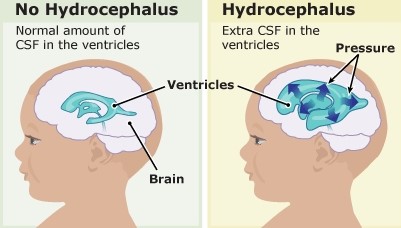Hydrocephalus, also known as “water on the brain”, is a condition in which cerebrospinal fluid (CSF) accumulates within the skull. Hydrocephalus can result in increased pressure within the skull, causing headaches and nausea, impairing vision and hearing, and possibly leading to dementia. The most common cause of hydrocephalus is an abnormal connection between arteries and veins in the brain: this connection allows excess amounts of CSF to leak into spaces containing blood vessels and its drainage through the normal pathways. Hydrocephalus usually results from blockages in these pathways that slow down, block, or reverse the flow of cerebrospinal fluid from inside to outside of the skull.
Acquired Hydrocephalus
Causes of hydrocephalus
Symptoms of hydrocephalus
Treatment of hydrocephalus
Congenital hydrocephalus
Types of hydrocephalus
1. Open-angle hydrocephalus
2. Closed-angle hydrocephalus
Functions of Hydrocephalus
Conclusion








